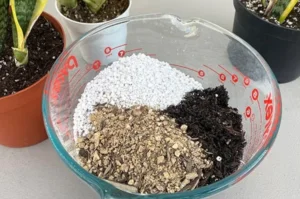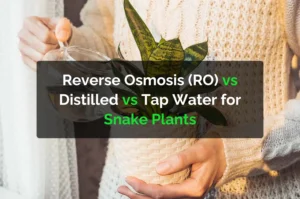The snake plant (Sansevieria) is a beloved houseplant for its resilience and striking appearance. But even these tough succulents have preferences when it comes to light. Understanding your snake plant light needs is key to keeping it thriving.
Why Is Sunlight Important for Snake Plants?
Just like humans, plants need sunlight for photosynthesis, a process where they convert light energy into chemical energy to fuel their growth. Sunlight is vital for snake plants as it helps them produce their food and maintain their health.
How Many Hours of Sunlight Do Snake Plants Need Daily?
Snake plants are known for their adaptability to low light conditions, but they still require some sunlight to thrive. Ideally, they need about 5 to 6 hours of indirect sunlight daily. However, they can tolerate low light or bright indirect light conditions as well.
How Does Sunlight Affect the Growth Rate of Snake Plants?
The amount of sunlight a snake plant receives is directly proportional to its growth rate. In low light conditions, snake plants grow much more slowly and require enough light to produce new leaves. However, avoid direct sunlight, which can scorch the leaves.
How Much Light is Best for a Snake Plant?
Snake plants prefer bright, indirect sunlight. Placing them near a north or east-facing window is ideal. Aim for 5-6 hours of indirect sunlight daily. Avoid direct sun.

Snake Plant: Sunlight Requirements
Let’s break down the different light levels snake plants can handle:
- Low Light: A few feet away from a window, or in a room with only fluorescent lighting. Your snake plant will survive but grow slowly.
- Bright, Indirect Light: Near a window that doesn’t receive direct sunlight (east or north-facing). This is the sweet spot for optimal growth.
- Direct Sunlight: Only for short periods. Too much can burn the leaves.
The Ideal Light Conditions for Snake Plants
To create the perfect light environment for your snake plant:
- Choose the Right Spot: Place it near a window that receives bright, indirect light. East- or north-facing windows are usually best.
- Rotate Regularly: Turn the pot every few weeks to ensure all sides are growing equally.
- Consider Supplemental Light: If your home lacks natural light, a grow light can help your snake plant thrive.
How Do I Know If My Snake Plant Needs More Light?
Observing your snake plant can give you valuable insights into its sunlight needs. If you notice the following signs, it might indicate that your plant needs more light:
- Slow growth or stunted development of new leaves
- Drooping or weak foliage
- Pale or yellowing leaves
- Loss of variegation in variegated varieties

Signs Your Snake Plant is Getting Too Much or Too Little Light
- Too Much Light: Scorched, yellow, or brown spots on leaves.
- Too Little Light: Leggy growth, pale leaves, slow growth.
Types of Snake Plants and Their Light Needs
Most snake plant varieties have similar light requirements. However, those with variegated leaves (like ‘Laurentii’) with its yellow borders might require a bit more light than the darker, solid green varieties like Sansevieria zeylanica to maintain its color contrast. Regardless of the type, none require full, direct sunlight and all prefer indirect light.
Additional Tips for Lighting Your Snake Plant
- Clean the Leaves: Dust can block sunlight, so wipe down the leaves occasionally.
- Adjust in Winter: You may need to move your snake plant closer to a window in winter when light levels are lower.
- Consider a Grow Light: If you’re struggling to provide enough natural light, a grow light can be a great investment.
Frequently Asked Questions (FAQs):
Can snake plants tolerate low light conditions?
Yes, snake plants are known for their ability to thrive in low light conditions, but they still require some indirect sunlight to maintain their health and growth.
Can snake plants survive in artificial light?
Yes, snake plants can thrive under artificial light if natural sunlight is insufficient. Fluorescent or LED grow lights work well.
SEO Managed by Muhammad Uzair







1 thought on “How Much Light Does a Snake Plant Need?”
Hurray, this is just the right information that I needed. You make me want to learn more!